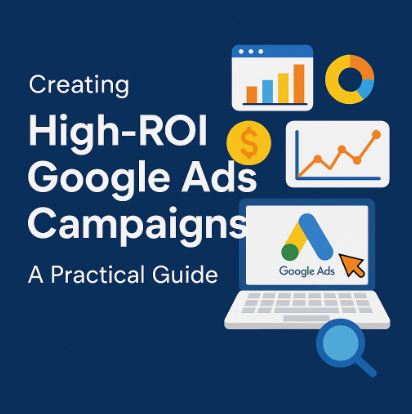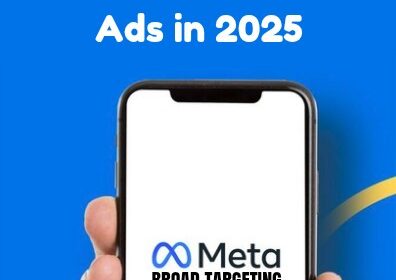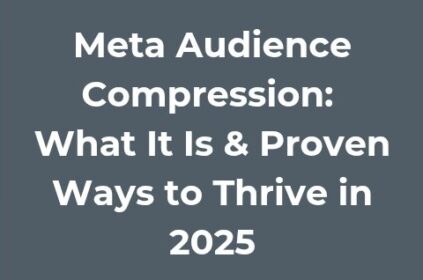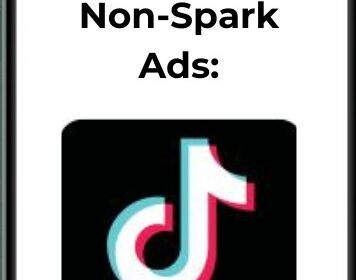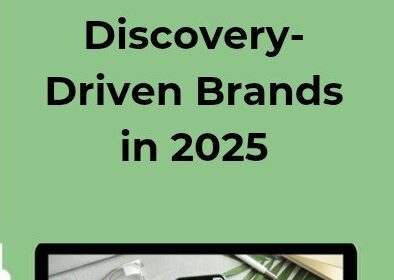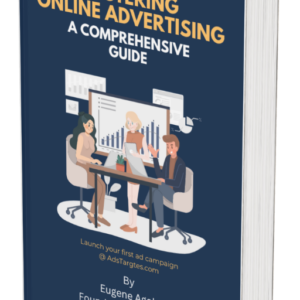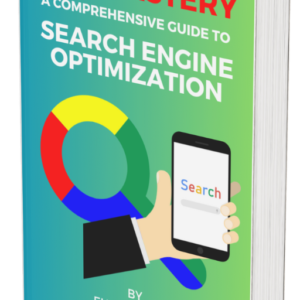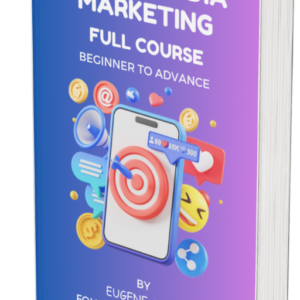Running Google Ads without seeing real returns is one of the fastest ways to burn your marketing budget.
Yet, thousands of business owners and digital marketers still pour money into campaigns that don’t convert — not because Google Ads doesn’t work, but because the strategy behind those campaigns is broken.
In 2025, it’s no longer about just getting clicks. It’s about getting the right clicks that lead to meaningful actions — whether that’s a sale, a sign-up, or a qualified lead. And to make that happen, your Google Ads strategy needs to be smarter, sharper, and more intentional.
That’s why I created this guide — packed with actionable Google Ads optimization tips for 2025 — to help you increase your ROI and stop wasting budget on guesswork.
Inside, you will learn the exact steps to build high-ROI Google Ads campaigns — the kind that drive results, not just impressions. We will cover everything from choosing the right keywords to optimizing your ad copy, setting up conversion tracking, and avoiding the most common mistakes that waste your ad spend.
And here’s something most advertisers miss: Google Ads becomes even more powerful when combined with strong SEO. That’s why I created SEO Mastery: A Comprehensive Guide to Search Engine Optimization — so you can learn how to attract high-converting traffic organically and reduce your dependency on paid ads over time.
What Makes a Google Ads Campaign High-ROI in 2025?
If you are running Google Ads in 2025, the goal is not just to get more traffic—it’s to get better results with less waste.
High-ROI Google Ads campaigns focus on what truly matters: conversions, not just clicks. And as the competition keeps getting fiercer, results come from strategic alignment across every part of your campaign—keywords, targeting, ad copy, landing pages, and tracking.
So, what exactly defines a high-ROI campaign?
#1. Clear, Conversion-Focused Objectives
Before launching any campaign, you need to define what success looks like. That could be product purchases, lead form submissions, or even booked appointments. A campaign that aims for broad traffic without a specific action in mind will almost always underperform.
For example, a SaaS brand promoting a free trial should structure its campaign around “Start Your Free Trial” as the primary goal—not just “Visit Our Website.”
#2. Intent-Based Keyword Targeting
In 2025, success with Google Ads starts with understanding search intent. High-ROI campaigns prioritize keywords that signal commercial or transactional intent, not just general interest.
Let’s say you’re advertising running shoes. Targeting a broad keyword like “best shoes” may drive a lot of clicks, but it’s less likely to convert compared to a keyword like “buy men’s trail running shoes online.”
The more specific and aligned your keywords are with your offer, the more efficient your ad spend becomes.
#3. Relevant Ad Copy That Speaks to the Problem
Users searching on Google are looking for a solution. Your ad must speak directly to their need and show why your offer is the right fit. High-performing campaigns use messaging that matches the searcher’s intent, includes value-driven benefits, and ends with a strong call to action.
If your keyword is “affordable website design for small business,” then your ad should say exactly that—don’t settle for vague copy like “Top Web Design Services.” Make your value proposition clear from the start. Learn How to Write Ad Copy That Converts: Best Ad Copywriting Tips in 2025.
#4. Seamless Landing Page Experience
Even the most optimized ads will fail if the landing page doesn’t meet user expectations. High-ROI campaigns guide users to pages that match the ad message, load fast, and are easy to navigate.
If your ad promises 20% off a product, the landing page should highlight that offer immediately—not bury it halfway down the page.
Also, Google’s Quality Score system measures this alignment. A better landing page experience can lower your cost-per-click (CPC) while improving ad placement. Campaigns that align with your site’s organic strengths often perform better—search-friendly landing pages tend to load faster, rank better, and convert higher. That’s another reason to invest in SEO alongside your ad strategy.
If you haven’t yet built a strong organic foundation, my course SEO Mastery: A Comprehensive Guide to Search Engine Optimization walks you through how to do that—step by step.
5. Accurate Tracking and Optimization
Finally, no campaign can succeed without proper tracking. You need to know exactly which ads, keywords, and devices are driving the most valuable actions.
In 2025, advertisers who take time to correctly set up conversion tracking using GA4 and Google Tag Manager will have the edge. You can’t improve what you can’t measure—and without data, you’re flying blind.
High-ROI Google Ads campaigns aren’t built on guesswork. They’re built on strategic planning, user intent, and measurable outcomes. Follow me carefully as I show you how to start strong by defining the right goals from day one.
What Are the Google Ads Optimization Tips for 2025?

Step 1: Define Clear, Conversion-Oriented Goals
One of the most critical Google Ads optimization tips for 2025 is to stop guessing and start defining precise, measurable goals before you even write a single ad.
If you’re not sure what action you want your audience to take, your campaign will lack direction—and your budget will reflect that.
In 2025, effective Google Ads campaigns begin with one question: What is the primary outcome you want from this ad?
It could be:
- A product purchase
- A lead form submission
- A newsletter sign-up
- A call booking
- App downloads
Each goal should be tied to a specific conversion action that can be tracked and optimized. For example, if you’re a local fitness studio, your goal might be “Get new trial sign-ups.” That means your ads, landing page, and keywords should all focus on trial offers—not just general fitness tips or vague service descriptions.
#1. Be Specific, Not Broad
Avoid general goals like “increase traffic” or “get visibility.” These may sound good, but they don’t help you calculate ROI. Focus on goals that can be measured in real numbers—like cost per acquisition (CPA), return on ad spend (ROAS), or number of qualified leads generated.
#2. Map Goals to Funnel Stages
Think of your campaign goals in relation to where users are in the buying journey:
- Top-of-funnel (awareness): Download a free guide, watch a webinar
- Middle-of-funnel (consideration): Request a quote, sign up for a demo
- Bottom-of-funnel (conversion): Buy now, start a free trial
Matching your campaign objective to the right funnel stage helps set the tone for your keyword choices, ad copy, and landing page design.
#3. Track Every Goal Accurately
It’s not enough to have goals—you must set them up for tracking. Use Google TagManager or GA4 to track form submissions, purchases, or button clicks. When goals are properly tracked, you can spot what’s working and double down on it.
This is where many advertisers fall short. They run campaigns blind, without feedback loops in place. But advertisers who succeed in 2025 will be those who let data guide every decision.
Step 2: Choose High-Intent Keywords That Match User Goals

No matter how great your ad copy looks or how polished your landing page is, if your keywords are attracting the wrong audience, your campaign will fall flat.
One of the most practical Google Ads optimization tips for 2025 is to prioritize intent over volume. It’s not just about getting traffic—it’s about getting the right clicks from users who are already close to taking action.
#1. Focus on Commercial and Transactional Intent
Let’s say you run an online course business. A keyword like “what is digital marketing” may get a high number of impressions, but those users are still in research mode.
Instead, keywords like “best digital marketing course for beginners” or “enroll in digital marketing course online” show high buying intent. That’s where your ad dollars should go.
This is especially important as CPCs continue to rise in competitive industries. Choosing keywords with strong intent helps you:
- Improve conversion rates
- Lower wasted ad spend
- Align messaging more directly with what users are actively looking for
#2. Use Keyword Match Types Strategically
Match types can make or break campaign performance:
- Broad match gives Google flexibility but often attracts less qualified traffic
- Phrase match ensures ads show only when the query includes your keyword idea
- Exact match gives you the tightest control—perfect for high-intent, bottom-funnel terms
In 2025, smart advertisers are using a mix of phrase and exact match to maintain precision, while pairing broad match only with strong negative keyword lists and tight audience controls.
#3. Expand with Long-Tail Keywords
Long-tail keywords are longer, more specific phrases with lower competition and higher intent. For instance:
- Instead of: “fitness classes”
- Try: “best online fitness classes for beginners”
- Or: “30-minute home workouts with no equipment”
These keywords not only cost less per click, but they also attract users who know exactly what they want.
#4. Align Keywords with Landing Page Content
Here’s another critical principle from the top Google Ads optimization tips 2025 playbook: alignment. If your ad promotes “affordable home insurance plans,” but your landing page talks broadly about “financial services,” your Quality Score will suffer—and so will your conversions.
Build keyword-specific landing pages that mirror the user’s search terms. That’s how you create a seamless experience that improves both CTR and conversion rates.
Step 3: Write Compelling Ad Copy That Converts
Once you’ve targeted the right keywords, your ad copy becomes the bridge between intent and action. You be informed that in 2025, attention spans are shorter, competition is tighter, and users are more selective about what they click.
That means your copy needs to do more than just inform—it needs to persuade, differentiate, and drive results.
#1. Address the Searcher’s Intent Immediately
Here’s one of the most overlooked Google Ads optimization tips for 2025: match your ad copy as closely as possible to what the user is actually searching for.
If someone searches “best accounting software for freelancers,” your headline shouldn’t read “Top Financial Tools for Businesses.” Instead, say:
“Best Accounting Software for Freelancers – Try Free for 30 Days”
This kind of direct match does two things:
- Improves your Quality Score
- Increases the likelihood of a click from someone ready to take action
Always assume the searcher is scanning fast—so make your message crystal clear, fast.
#2. Use Benefit-Driven Headlines and Descriptions
Your headline is prime real estate. Use it to highlight the strongest value you offer, such as:
- “Cut Ad Costs by 30% With Smart Campaigns”
- “Affordable SEO Tools – Rated #1 by Marketers”
- “Get More Leads, Not Just Clicks – Start Now”
Then, support your headline with descriptions that back up the promise, remove objections, or add urgency.
For example:
“No setup fees. Cancel anytime. Results in as little as 7 days.”
This is the level of precision high-ROI campaigns are built on.
#3. Test Multiple Variations (and Let Data Lead)
In 2025, Google’s responsive search ads (RSAs) allow you to test multiple headline and description combinations—but smart marketers don’t rely on automation alone.
Manually test ad variants based on:
- Different value propositions
- Tone (direct vs. conversational)
- Urgency vs. credibility
- Offer-focused vs. benefit-focused messages
Track CTR, conversion rates, and Quality Scores, then pause underperforming versions. This constant testing and refinement is at the heart of every practical list of Google Ads optimization tips for 2025.
#4. Keep Mobile in Mind
Over 60% of Google searches come from mobile devices. That means your most important message should fit within the first 30–40 characters. Always frontload the headline with what matters most.
Need help balancing messaging between SEO and paid campaigns? Our course SEO Mastery: A Comprehensive Guide to Search Engine Optimization will show you how to craft copy that performs in both organic and paid search environments—so you’re not just competing, you’re converting.
Step 4: Build High-Converting Landing Pages That Match Your Ads
You’ve targeted the right keywords and written compelling ads. But what happens after the click determines whether you gain a customer—or waste your budget.
That’s why building a high-converting landing page is one of the most important Google Ads optimization tips for 2025. Your landing page must meet expectations, build trust instantly, and drive users to take the next step.
#1. Keep Messaging Consistent from Ad to Page
If your ad promotes “Free Trial for Social Media Scheduling Tools,” your landing page should repeat that offer in the headline and reinforce it visually.
Inconsistent messaging confuses users and lowers conversion rates. Consistency, on the other hand, creates a seamless experience that tells visitors they’re in the right place.
Example:
- Ad Headline: “Try the Best SEO Tool – Free for 14 Days”
- Landing Page Headline: “Start Your Free 14-Day Trial – No Credit Card Needed”
This direct match improves Quality Score and user trust—two essentials for Google Ads success in 2025.
#2. Cut the Clutter and Focus on One Clear Action
Avoid the mistake of sending ad traffic to your homepage or a cluttered product page. Instead, create a dedicated landing page with one goal: conversion.
A high-ROI landing page should include:
- A clear, benefit-focused headline
- One strong call-to-action (e.g., Sign Up, Get Started, Book a Demo)
- Supporting benefits or features in brief, digestible copy
- Trust signals like testimonials, ratings, or security badges
- Fast loading speed—especially on mobile
Anything that doesn’t support conversion should be removed.
#3. Optimize for Speed and Mobile Usability
One of the most underrated Google Ads optimization tips for 2025 is improving page load time. According to Google, even a one-second delay can reduce conversions by up to 20%.
Use tools like Google PageSpeed Insights or GTmetrix to test your landing page. Compress images, minimize scripts, and streamline design for speed.
Make sure your mobile experience is just as strong. Buttons should be thumb-friendly, text readable, and CTAs visible without scrolling endlessly.
#4. Reinforce With SEO-Optimized Content
Even though landing pages are built for paid traffic, integrating SEO best practices (like using structured headers, relevant keywords, and internal links) enhances page quality and helps with long-term discoverability.
Remember: campaigns that align with your site’s organic strengths often perform better. That’s one more reason to pair your paid ad strategy with a strong SEO foundation. Our course, SEO Mastery: A Comprehensive Guide to Search Engine Optimization, walks you through how to build high-performing pages that support both paid and organic growth.
Step 5: Track the Right Metrics and Adjust Campaigns Strategically

No matter how much effort you put into creating the perfect ads, selecting the right keywords, or building high-converting landing pages, the work isn’t over once your campaign is live. To truly maximize ROI, you need to track the right metrics and adjust your campaigns based on data.
This is where Google Ads optimization tips for 2025 really come into play. Successful advertisers are continually optimizing—by analyzing data, identifying areas for improvement, and making informed adjustments.
Key Metrics to Track
Not all metrics are created equal. While it can be tempting to focus on impressions and clicks, true success is about understanding how well your ads lead to tangible business results. The following are the most important metrics to monitor:
#1. Click-Through Rate (CTR)
CTR measures how often people click your ad after seeing it. A high CTR suggests your ad copy resonates with the target audience. A low CTR, however, signals the need for a review of your keywords, ad copy, or targeting.
Optimize for high CTR by testing multiple ad variations and making sure your messaging aligns with search intent.
#2. Conversion Rate
While CTR measures interest, conversion rate shows how many clicks lead to a desired action (e.g., filling out a form, making a purchase). A low conversion rate might indicate a mismatch between your ad and landing page, poor user experience, or a lack of trust signals.
Increase conversion rates by improving your landing page copy, simplifying the user journey, and ensuring the page aligns perfectly with your ad.
#3. Cost Per Acquisition (CPA)
CPA tells you how much you’re paying for each conversion. As costs increase in many industries, finding ways to lower CPA while maintaining quality is critical.
Optimize for CPA by bidding smarter, targeting more qualified keywords, and testing ad copy and landing pages to ensure the best possible cost-to-conversion ratio.
#4. Quality Score
Google’s Quality Score is a critical indicator of how relevant your ads, keywords, and landing pages are to users. A high Quality Score lowers your CPC and boosts your ad position, while a low Quality Score can result in higher costs and poor performance.
Improve Quality Score by ensuring your ad copy matches user intent, your keywords are highly relevant, and your landing page provides a great user experience.
#5. Return on Ad Spend (ROAS)
ROAS is one of the most straightforward metrics to measure the overall success of your Google Ads campaigns. It tells you how much revenue you generate for each dollar spent on ads.
Increase ROAS by fine-tuning your targeting, adjusting bids, testing different creatives, and refining your sales funnel for maximum impact.
To get the most out of your Google Ads campaigns, use these metrics to refine and optimize your campaigns continually. Set up regular reviews—weekly, monthly, or quarterly—depending on your business goals.
Common Pitfalls to Avoid and How to Fix Them
Even the most well-planned Google Ads optimization tips for 2025 can be derailed by common mistakes that marketers often make. Whether you’re a seasoned pro or just getting started, understanding these pitfalls and knowing how to avoid or fix them is crucial for maximizing your ad spend and improving your ROI.
#1. Not Using Negative Keywords Effectively
One of the biggest mistakes online advertisers make is not utilizing negative keywords properly. This can lead to ads showing up for irrelevant searches, resulting in wasted clicks and poor campaign performance.
Regularly review and update your negative keyword list to ensure your ads are only appearing for relevant queries. You can find irrelevant search terms in your Search Terms report and add them to your negative keyword list.
For example, if you’re advertising a premium service but keep getting clicks from users searching for “cheap alternatives,” add terms like “cheap” and “free” to your negative keyword list.
#2. Ignoring Mobile Optimization
With the majority of searches now happening on mobile devices, not optimizing your ads and landing pages for mobile can be a costly mistake. Poor mobile performance can lead to a high bounce rate, reduced conversions, and wasted ad spend.
Make sure your landing pages are responsive, meaning they adapt to different screen sizes. Additionally, ensure that your ad copy is mobile-friendly—short, direct, and compelling within the limited space available.
For instance, a mobile user may not have the patience to scroll through a lengthy page. Ensure the most important information is visible above the fold.
#3. Focusing Only on Clicks Instead of Conversions
Many advertisers focus too heavily on increasing click-through rates (CTR) without considering how those clicks translate into actual conversions. While a high CTR is a good sign, if the clicks aren’t converting into sales or leads, your campaign is not achieving its true potential.
Shift your focus to conversion-driven metrics such as conversion rate, cost per conversion (CPA), and return on ad spend (ROAS). To improve conversions, consider optimizing your landing pages and adjusting your targeting to ensure you’re attracting the right audience.
For example, you may see higher CTR from a broad target, but a narrower audience could lead to more relevant clicks that convert at a higher rate.
#4. Not Testing Ad Variations
Running a single ad without testing different variations is another common mistake. Without testing different headlines, descriptions, and calls to action, you’re missing out on valuable insights that could help improve performance.
Implement A/B testing to experiment with different ad copy variations. This allows you to understand what resonates best with your target audience and refine your approach for higher CTR and conversions.
For example, test different headlines like “Save 20% on Your First Order” versus “Get Free Shipping on Your First Purchase.” Compare which messaging drives more conversions.
#5. Failing to Track the Right Metrics
Tracking vanity metrics such as impressions or clicks without tying those metrics back to business goals (e.g., sales or leads) can lead to misguided decision-making and inefficiencies in your campaign.
Focus on metrics that directly impact your ROI, such as conversion rate, cost per conversion, and ROAS. Regularly analyze these metrics to identify trends, troubleshoot issues, and adjust your campaign strategy accordingly.
For instance, if you see that your ad campaign is generating plenty of clicks but few conversions, it may indicate a problem with your landing page or a mismatch in targeting.
#6. Running Campaigns Without a Clear Goal or Focus
Running a campaign without clearly defined goals is like trying to hit a target without a clear view of the bullseye. Without a focus on specific objectives—whether it’s increasing sales, generating leads, or driving website traffic—your ad efforts will lack direction.
Set clear, measurable goals for your campaigns. Ensure you know what actions you want users to take (e.g., making a purchase, signing up for a newsletter) and optimize your ads, keywords, and landing pages to drive those actions.
Conclusion
Optimizing your Google Ads campaigns is not just about creating ads that attract clicks—it’s about crafting strategies that drive measurable results and long-term success. By following the Google Ads optimization tips for 2025, you can ensure that your campaigns are well-positioned to meet your business objectives, whether that’s increasing sales, generating high-quality leads, or boosting brand awareness.
From setting clear goals and targeting the right audience to constantly refining your ad copy and landing pages, every step of the process plays a crucial role in maximizing your return on investment. By taking a holistic approach to Google Ads optimization, you’re not only improving your immediate campaign outcomes but also building a sustainable framework for ongoing digital success.
For those looking to take their Google Ads knowledge even further, investing in educational resources like our course on SEO Mastery: A Comprehensive Guide to Search Engine Optimization can help refine your skills in both SEO and paid search, ensuring a powerful, long-term strategy.
With the right tools, techniques, and mindset, you can set your Google Ads campaigns up for continued growth, ensuring that every click, impression, and dollar spent is working toward your business goals. So, start optimizing today and position your brand for success in 2025 and beyond.

